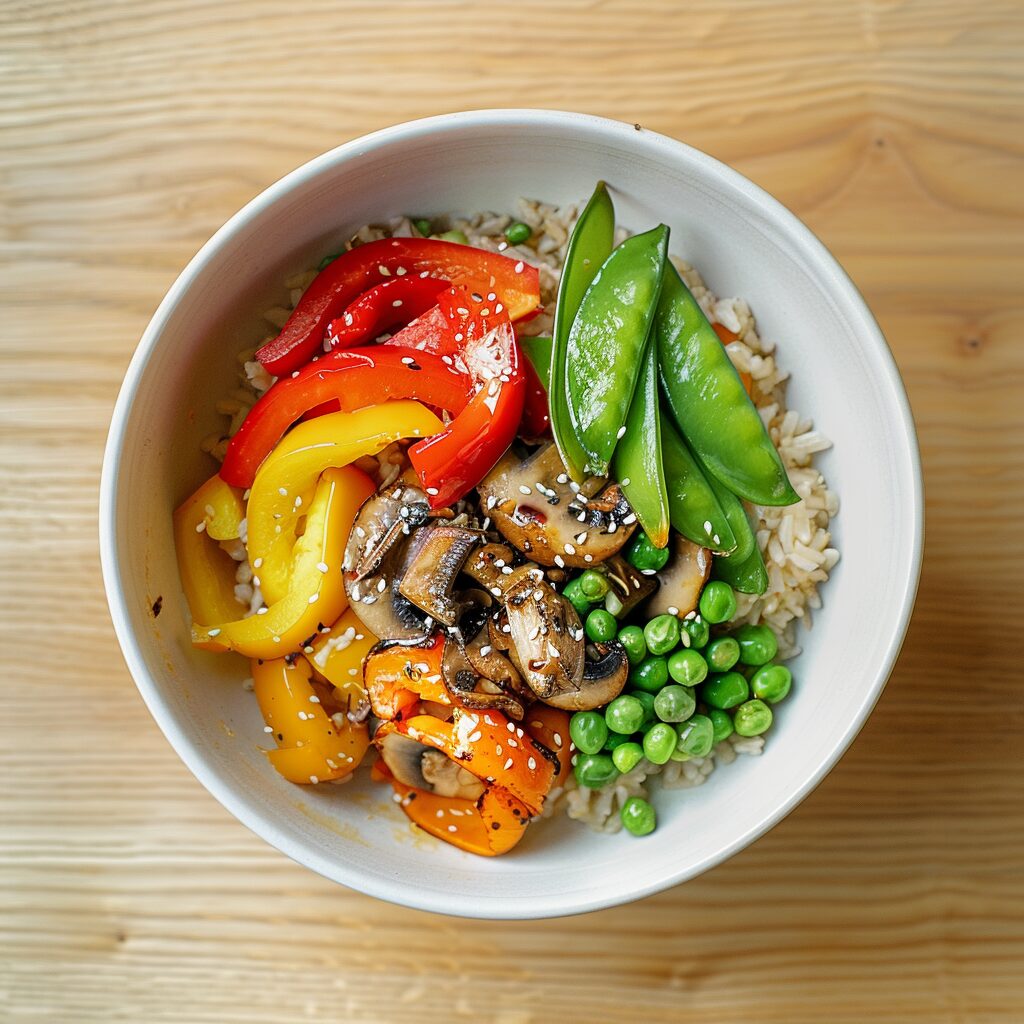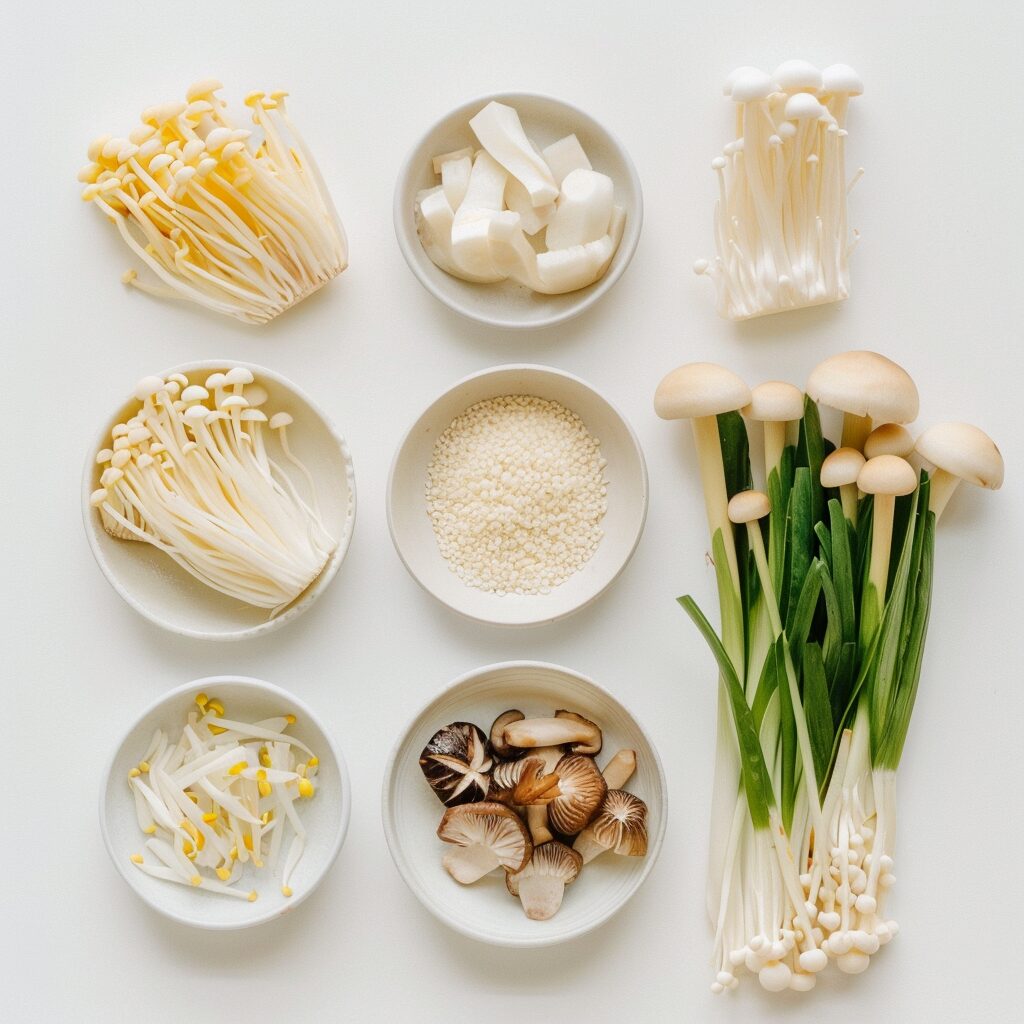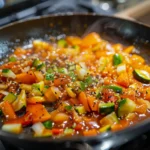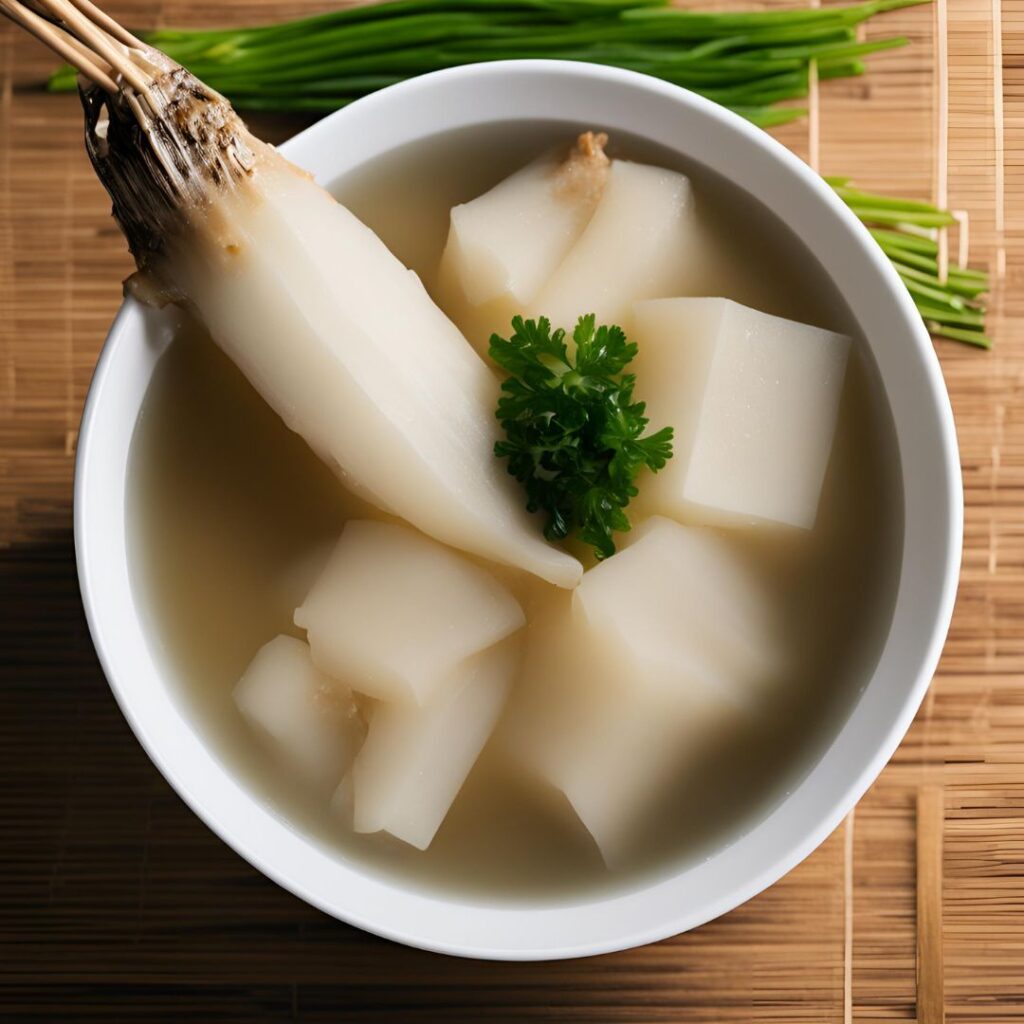Introduction
Vegetable Ankake Donburi is a delightful Japanese dish that combines a thick, savory sauce called ankake with a medley of vegetables over rice, providing a nutritious, comforting meal. Donburi, meaning “bowl,” is a staple in Japanese cuisine, offering a versatile way to serve a complete meal in a single dish. My first encounter with this particular version was at a local Japanese festival, where it was served as a warm, hearty option that instantly caught my attention with its vibrant colors and aromatic appeal.


Cultural Context
Donburi dishes are beloved in Japan for their simplicity and versatility. They are a common lunchtime meal due to their quick preparation and balanced nutrition. The ankake sauce, thickened with potato starch, is a warming element often used in Japanese cooking to add depth and texture to dishes. Vegetable Ankake Donburi is especially popular in the colder months, serving as a comforting meal that can easily incorporate seasonal vegetables.
Vegetable Ankake Donburi Ingredient Spotlight
Shiitake Dashi: A broth made from shiitake mushrooms, known for its deep umami flavor.
Mirin & Light Soy Sauce (Usukuchi Shoyu): Adds a subtle sweetness and saltiness to the sauce, enhancing the overall flavor of the dish.
Vegetables: Commonly includes renkon (lotus root), shiitake mushrooms, and bell peppers, each adding unique textures and flavors.
Potato Starch: Used to thicken the ankake sauce, giving it a glossy, appealing consistency.
Health Benefits
This dish is packed with fiber from the brown rice and a variety of vegetables, promoting digestive health. The shiitake mushrooms in the dashi are a great source of vitamins B and D, minerals, and beta-glucans, which support immune health. The dish is also low in fat, making it a heart-healthy choice.


Cooking Tips
Consistency of Ankake Sauce: Ensure a smooth sauce by gradually adding the potato starch slurry to the simmering dashi and stirring continuously to prevent clumps.
Vegetable Preparation: Sauté the vegetables just until tender to maintain their texture and nutritional content.
Rice Cooking: Use a rice cooker for the best results in cooking brown rice, ensuring it’s fluffy and well-cooked.
Serving Suggestions
Serve the ankake sauce over a bowl of steamed brown rice, garnishing with radish sprouts (kaiware daikon), chopped green onions, and a sprinkle of ichimi or shichimi pepper for a bit of heat. This dish pairs beautifully with a side of miso soup and pickled vegetables for a complete meal.
Variations
Noodle Alternative: Substitute brown rice with udon noodles for a different base.
Protein Additions: Include tofu or a mild white fish like red snapper for added protein.
Conclusion
Vegetable Ankake Donburi is a testament to the versatility and health benefits of Japanese cuisine. It’s a dish that invites experimentation with different vegetables and proteins, making it suitable for any season or dietary preference. Try making it at home and share your experience or any modifications you made in the comments below. I look forward to hearing your stories and suggestions for future recipes
PrintVegetable Ankake Donburi Recipe
A Hearty, Nutritious Japanese Bowl. Vegetable Ankake Donburi is a delightful Japanese dish that combines a thick, savory sauce called ankake with a medley of vegetables over rice, providing a nutritious, comforting meal.
- Cuisine: Japanese
Ingredients
For ankake (an sauce):
- 2 cups shiitake dashi
- 2 Tbsp mirin, nikkitta (microwaved 20–30 secs to reduce alcohol)
- 2 Tbsp light soy sauce (usukuchi shoyu)
- 1 1/2 Tbsp potato starch in 3 Tbsp water
For the vegetables:
- 1/2 piece of renkon, (lotus root) ~ 1 cup, quartered 1/4 in thick
- 1 1/2 cups fresh shiitake mushrooms, sliced 1/4 in thick
- 2 pieces aburaage, fried tofu skin or small strips of firm tofu
- 1/4 red bell pepper, sliced 1/4 in thick
- 1/4 yellow bell pepper, sliced 1/4 in thick
- 1/2 cup sugar snap peas
- 1/2 bunch enoki mushrooms, bottom part removed
- 1–2 Tbsp extra virgin olive oil, or sesame oil
For serving:
Brown rice; or alternatively udon noodles
Kaiware daikon (radish sprouts), shiso, chopped green onions, white pepper, ichimi or shichimi red pepper
Instructions
- First make the shiitake dashi. (While this is cooking you can prepare the vegetables)
- After the dashi is ready and while still hot add mirin, light soy sauce and stir in.
- Next gradually add the potato starch slurry into the dashi mixture stirring continuously to avoid clumping. Bring to a gentle boil and within a minute or so, the mixture should be noticeably thicker. Once thickened remove from heat and cover. This is your ankake (sauce)
- Use a large sauté pan on medium heat, add in the olive oil and cook the renkon and mushrooms for 1-2 minutes. Add in the rest of the vegetables and cook 4-5 minutes until softened. Stir occasionally and allow to brown slightly.
- Once the vegetables have softened add all the an sauce to the vegetable pan and mix the vegetables into the sauce. Remove from heat.
- Place one serving of brown rice into a large bowl and pour the vegetable an sauce over the rice ~ about 1 cups worth.
- Top with desired herbs or peppers and enjoy!











Konnichiwa! (Hello!) I'm Pat Tokuyama, a Japanese tofu cookbook author, who travels for music, food, and adventure. If you like Japanese tea, checkout some of the newestorganic japanese tea, matcha bowls and noren and more!
** Curious about the Plant Based Japanese Cooking Club? ** Learn more here!